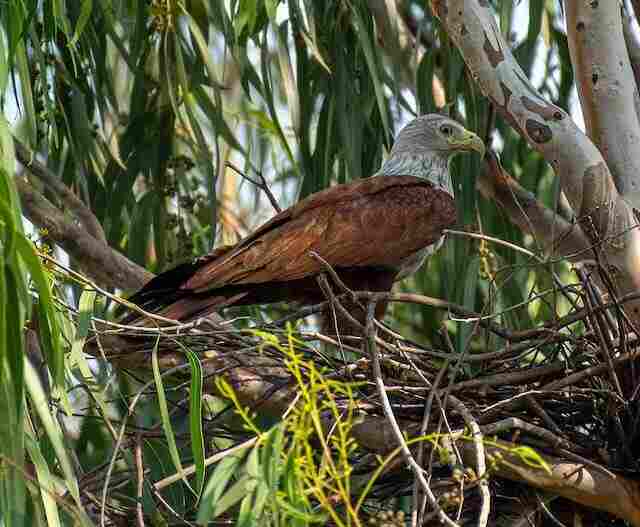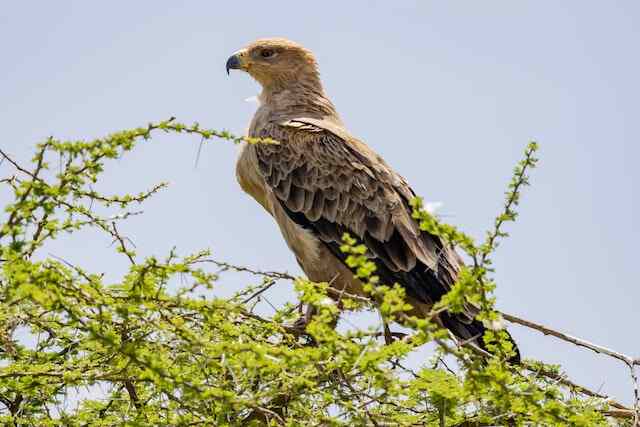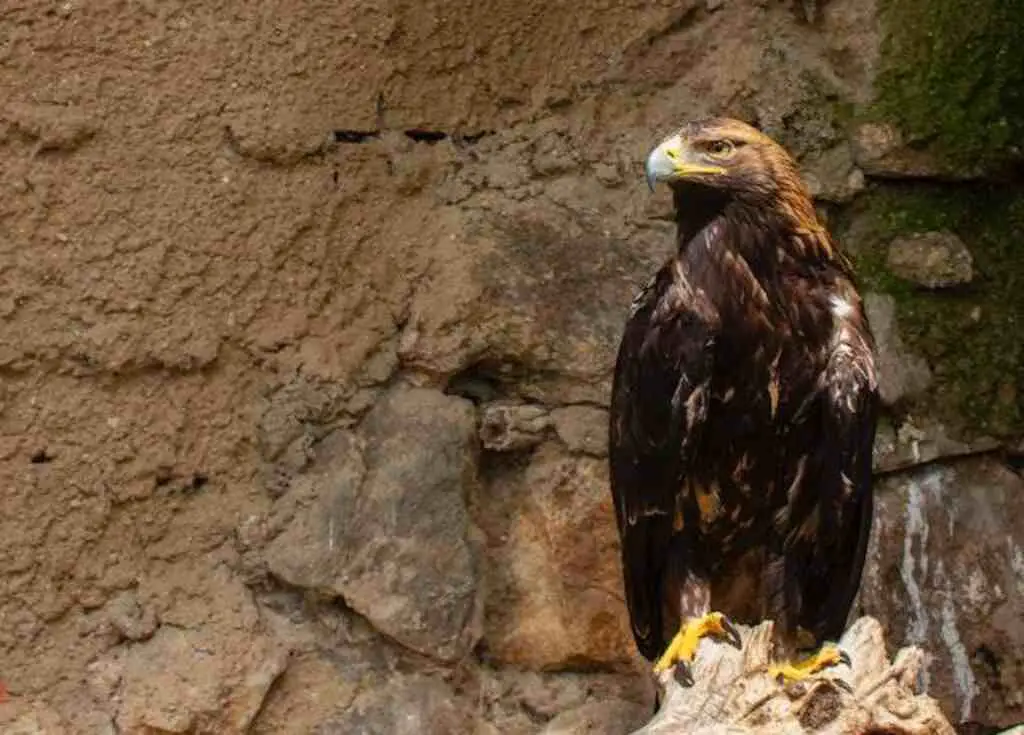Do Eagles Eat Grasshoppers? The short answer is no, but let’s unravel the culinary secrets of these majestic sky dwellers.
Join us as we explore the diverse palate of eagles beyond their signature catches. From fish to small mammals, eagles are known for their hunting prowess.
However, have you ever wondered about their potential appetite for grasshoppers?
This article takes flight into the intriguing world of eagles and grasshoppers, examining their nutritional value, hunting techniques, and the impact on eagle conservation.
Get ready to soar through a captivating journey that unveils the surprising relationship between eagles and these agile insects.
Table of Contents
- 1 Key Takeaways
- 2 Overview of Eagle’s Diet
- 3 Variety of Prey Consumed by Eagles
- 4 Do Eagles Eat Grasshoppers
- 5 Grasshoppers as a Part of Eagle’s Diet
- 6 Nutritional Value of Grasshoppers for Eagles
- 7 Hunting Techniques of Eagles
- 8 Importance of Grasshoppers in Eagle’s Ecosystem
- 9 Role of Grasshoppers in Eagle’s Reproduction
- 10 Other Insects Consumed by Eagles
- 11 Impact of Diet on Eagle’s Health and Fitness
- 12 Conservation of Grasshopper Populations for Eagle Conservation
- 13 Conclusion: The Fascinating Relationship Between Eagles and Grasshoppers
- 14 Frequently Asked Questions
- 14.1 How many species of grasshoppers do eagles typically consume?
- 14.2 Do eagles prefer to eat grasshoppers at a certain time of year?
- 14.3 Are there any negative effects on eagles if they consume too many grasshoppers?
- 14.4 How do eagles catch grasshoppers in flight?
- 14.5 Do grasshoppers provide any specific nutrients that are beneficial to eagles’ overall health and fitness?
- 15 Author
Key Takeaways
- Grasshoppers are a valuable and abundant food source for eagles due to their high protein content.
- Grasshoppers provide essential nutrients and energy for eagles, sustaining their flight and hunting capabilities.
- Grasshoppers play a crucial role in the reproduction and growth of eagles, especially during the breeding season.
- Declining grasshopper populations can negatively impact eagle foraging behavior and reduce their food supply.

Overview of Eagle’s Diet
Eagles have a diverse diet consisting of various prey, including small mammals, fish, reptiles, and birds, but also insects such as grasshoppers. Their hunting abilities enable them to capture and consume a wide range of prey.
Grasshoppers, in particular, are an important component of an eagle’s diet. They provide a valuable source of nutrients and energy due to their high protein content.
Additionally, the grasshopper population dynamics play a role in determining the availability of this prey item for eagles.
Factors such as weather conditions, habitat changes, and predation can influence the abundance of grasshoppers, thereby affecting the eagle’s food supply.
Understanding the interactions between eagles and grasshoppers contributes to our knowledge of ecosystem dynamics.
Furthermore, this discussion on the eagle’s diet will now transition into the subsequent section, which explores the variety of prey consumed by eagles.
Variety of Prey Consumed by Eagles
A diverse range of prey is consumed by these majestic birds, including various insects found within their natural habitat. Eagles exhibit a wide variety of hunting behaviors, showcasing their adaptability and resourcefulness.
When it comes to grasshoppers, eagles do indeed eat them as part of their diet. Grasshoppers are a valuable food source for eagles due to their abundance and accessibility.
These insects provide essential nutrients and energy for the birds, enabling them to sustain their impressive flight and hunting capabilities.
The consumption of grasshoppers by eagles also plays a crucial role in maintaining the balance of ecosystems, as eagles help control the population of these insects.
As we delve further into the importance of grasshoppers as a part of the eagle’s diet, we begin to understand the intricate relationship between these creatures and their environment.
Do Eagles Eat Grasshoppers
While eagles have a diverse diet, grasshoppers are not considered a significant part of their regular food intake.
While it’s possible for an eagle to consume grasshoppers opportunistically, they primarily rely on larger prey such as fish, small mammals, and birds to meet their nutritional needs.

Grasshoppers as a Part of Eagle’s Diet
Grasshoppers play a vital role in the diet of eagles, serving as a valuable source of essential nutrients and energy.
Eagles are opportunistic predators, and their diet consists of a diverse range of prey including small mammals, birds, reptiles, and insects.
Grasshoppers are particularly important for eagles due to their abundance and high nutritional value.
They provide a rich source of protein, vitamins, and minerals, which are necessary for the eagle’s growth, reproduction, and overall health.
In fact, grasshoppers are known to be a significant component of the eagle’s diet, especially during the breeding season when the demand for energy is high.
Additionally, the consumption of grasshoppers by eagles helps regulate their population, contributing to the balance and stability of the grasshopper’s ecosystem.
Transitioning into the subsequent section, the nutritional value of grasshoppers for eagles is further explored.
Nutritional Value of Grasshoppers for Eagles
To understand the nutritional value of grasshoppers for eagles, it is important to examine the protein, vitamin, and mineral content they provide.
Grasshoppers are a sustainable food source for eagles, as they are abundant in many ecosystems and can be easily captured by these birds.
Grasshoppers are particularly rich in protein, which is essential for the growth and development of eagles.
They also contain various vitamins, such as vitamin B12 and vitamin E, which play important roles in maintaining the overall health of these birds.
Additionally, grasshoppers are a good source of minerals like calcium and phosphorus, which are crucial for the formation of strong bones and feathers in eagles.
Understanding the nutritional benefits of grasshoppers is vital for comprehending their impact on eagle population dynamics.
Transitioning to the subsequent section about hunting techniques of eagles, it is important to explore how these birds utilize their exceptional hunting skills to capture their prey.
Hunting Techniques of Eagles
Eagles employ a range of highly skilled hunting techniques to secure their prey, showcasing their awe-inspiring predatory abilities.
These techniques vary depending on the species of eagle and the type of prey they are targeting.
One common hunting method is called soaring and stooping, where an eagle will fly high in the sky, scanning the ground for potential prey.
Once a target is spotted, the eagle will fold its wings and dive at incredible speeds, using its sharp talons to snatch the prey.
Another technique is known as perch hunting, where an eagle will sit on a high perch and wait for an opportunity to pounce on unsuspecting prey that comes within its striking range.
| Hunting Technique | Description |
|---|---|
| Soaring and stooping | Flying high in the sky, scanning the ground for prey, then diving down at incredible speeds to snatch prey with sharp talons. |
| Perch hunting | Sitting on a high perch and waiting for an opportunity to pounce on unsuspecting prey within striking range. |
| Hunting in pairs | Cooperatively hunting with a partner, using strategic positioning and communication to increase chances of capturing prey. |
| Ambush hunting | Concealing themselves and waiting for prey to come close before launching a surprise attack, relying on stealth and patience. |
These hunting techniques enable eagles to efficiently capture prey, including grasshoppers, which provide important nutritional value for their survival.
Transitioning into the subsequent section, the importance of grasshoppers in the eagle’s ecosystem becomes evident.

Importance of Grasshoppers in Eagle’s Ecosystem
The ecological balance of the eagle’s habitat relies on the availability and role of grasshoppers as a primary source of nutrition for various organisms within the ecosystem.
Grasshoppers are of utmost importance in the population dynamics of eagles, as they form a significant portion of their diet.
Eagles are skilled predators that rely on their sharp vision and powerful flight to capture prey, including grasshoppers.
The decline in grasshopper populations can have a profound impact on eagle foraging behavior, as it reduces their food supply and may force them to seek alternative prey.
Understanding the importance of grasshoppers in the eagle’s ecosystem is crucial for conservation efforts aimed at preserving both the eagle population and its habitat.
Transitioning into the subsequent section about the role of grasshoppers in the eagle’s reproduction, it is essential to explore their contribution to the reproductive success of these magnificent birds.
Role of Grasshoppers in Eagle’s Reproduction
Grasshoppers play a vital role in the reproductive success of eagles by providing a crucial source of nutrition for the development and growth of their offspring.
As a food source for eaglets, grasshoppers are rich in proteins, vitamins, and minerals essential for their rapid growth and development.
The availability of grasshoppers directly influences the reproductive success of eagles, as fluctuations in grasshopper populations can impact the availability of this vital food source.
During periods of high grasshopper abundance, eagles are able to provide a consistent and nutritious diet to their young, resulting in higher survival rates and healthier offspring.
Conversely, when grasshopper populations decline, eagles may struggle to find sufficient food for their eaglets, leading to reduced reproductive success.
Understanding the relationship between grasshoppers and eagle reproduction is crucial for conservation efforts aimed at ensuring the long-term viability of eagle populations.
Transitioning into the subsequent section about ‘other insects consumed by eagles’, it is important to explore the broader dietary preferences of these majestic birds.
Other Insects Consumed by Eagles
Other insects, such as beetles and ants, are also an integral part of the diverse diet of eagles. Studies have shown that these majestic birds may consume up to 200,000 insects in a single breeding season.
Eagles exhibit a variety of hunting behaviors to capture their insect prey, including aerial acrobatics and swooping down from perches.
This allows them to efficiently target and capture a wide range of insect species.
While grasshoppers play a role in the eagle’s reproduction, the consumption of other insects ensures a balanced diet and provides essential nutrients for their overall health and fitness.
Additionally, the impact of eagle predation on grasshopper populations is not well understood, as grasshoppers are only one component of their insect diet.
Understanding the full range of insects consumed by eagles is crucial for assessing their ecological impact and maintaining healthy ecosystems.

Impact of Diet on Eagle’s Health and Fitness
The diet of eagles plays a crucial role in their overall health and fitness, as it directly impacts their lifespan and migration patterns.
While eagles consume a variety of insects, including grasshoppers, the specific role of grasshoppers in their diet has been of particular interest to researchers.
Grasshoppers are a rich source of protein and nutrients for eagles, providing them with the energy they need for their long migratory journeys.
Additionally, the consumption of grasshoppers has been linked to the successful breeding and reproduction of eagles.
| Nutritional Content of Grasshoppers | Contribution to Eagle’s Diet |
|---|---|
| High in Protein | Vital for Muscle Development |
| Rich in Vitamins and Minerals | Supports Overall Health |
| Good Source of Essential Fatty Acids | Promotes Feather and Egg Quality |
| Abundant and Easily Accessible | Sustains Energy and Survival |
Understanding the significance of grasshoppers in an eagle’s diet goes beyond their mere consumption. These agile insects play a vital role in the successful breeding and reproduction of eagles.
As showcased in the table above, grasshoppers offer a nutritional feast for these magnificent birds.
Their high protein content aids in muscle development, while vitamins and minerals contribute to overall health.
Essential fatty acids promote feather and egg quality. Moreover, the abundance and accessibility of grasshoppers sustain energy levels, crucial for survival and migration patterns.
Preserving and restoring grasshopper populations should be a key focus in conservation efforts to ensure the well-being and survival of eagles.
Conservation of Grasshopper Populations for Eagle Conservation
Conservation efforts directed towards the preservation and restoration of grasshopper populations are imperative for safeguarding the well-being and survival of eagles, evoking a sense of urgency and responsibility in the audience.
To develop effective conservation strategies, it is crucial to understand the dynamics of grasshopper populations.
Research has shown that grasshopper populations are influenced by various factors, including climate, habitat loss, and pesticide use.
By implementing measures to mitigate these threats, such as promoting sustainable agricultural practices and conserving grassland habitats, we can ensure the availability of an adequate food supply for eagles.
Additionally, monitoring and studying grasshopper populations can provide valuable insights into the overall health of ecosystems and aid in the development of comprehensive conservation plans.
Ultimately, the conservation of grasshopper populations is not only essential for the survival of eagles but also for the maintenance of ecological balance.
This will be further explored in the subsequent section, which delves into the fascinating relationship between eagles and grasshoppers.

Conclusion: The Fascinating Relationship Between Eagles and Grasshoppers
Understanding the intricate interdependence between eagles and grasshoppers offers valuable insights into the delicate balance of ecosystems and the significance of maintaining healthy grasshopper populations.
The relationship dynamics between eagles and grasshoppers are complex and fascinating.
Eagles have behavioral adaptations that allow them to efficiently prey on grasshoppers, such as their keen eyesight and aerial agility.
Grasshoppers, on the other hand, have evolved to detect and evade predators like eagles through their ability to jump long distances and their cryptic coloration.
This predator-prey relationship serves as a driving force for the evolution of both species.
Maintaining healthy grasshopper populations is crucial for the survival of eagles, as they heavily rely on these insects as a food source.
By conserving grasshopper populations, we not only support the survival of eagles but also contribute to the overall health and balance of ecosystems.
Frequently Asked Questions
How many species of grasshoppers do eagles typically consume?
Eagles typically consume a diverse range of grasshopper species, reflecting their dietary preferences. The species diversity of grasshoppers consumed by eagles is significant, highlighting the versatility in their foraging behavior and adaptation to different environments.
Do eagles prefer to eat grasshoppers at a certain time of year?
The timing of grasshopper consumption by eagles can impact their behavior and reproduction. However, there is limited research on whether eagles prefer to eat grasshoppers at a certain time of year. Further studies are needed to understand this aspect of their diet.
Are there any negative effects on eagles if they consume too many grasshoppers?
Excessive consumption of grasshoppers can have detrimental effects on eagles’ health. Grasshoppers, though rich in protein and other nutrients, may contain toxins and parasites that can harm eagles’ digestive system and overall well-being.
How do eagles catch grasshoppers in flight?
Eagles employ various catching techniques to capture grasshoppers in mid-air. They rely on their exceptional vision and agility, using sharp talons to snatch the insects with precision. It is unclear if eagles have a preferred species of grasshopper to target while hunting.
Do grasshoppers provide any specific nutrients that are beneficial to eagles’ overall health and fitness?
Grasshoppers provide essential nutrients, such as protein, vitamins, and minerals, that contribute to the overall health and fitness of eagles. These nutrients support the development of strong muscles and enhance the eagle’s hunting skills.



